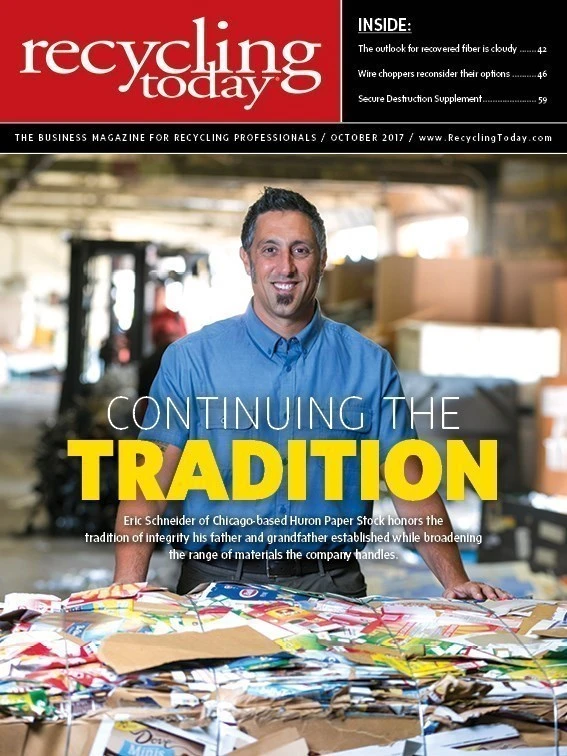
The hurricane and tropical storm season
The aftereffects of Hurricanes Harvey and Irma have had an impact on September pricing indices tabulated by American Metal Market (AMM). In the September buying period, domestic pricing as measured by AMM’s Midwest indices stayed within a dollar or two of August pricing.
Rising above domestic prices in September were the offers coming from overseas buyers. Reflecting a global steel industry that seems poised to enjoy a profitable second half of 2017, overseas buyers came in with prices that rose by $22 per ton on the Atlantic Coast and by $21 per ton on the Pacific Coast, according to AMM.
Presenters and attendees at India-based SteelMint’s 2017 Steel Scrap & Raw Materials Conference Asia in Bangkok largely displayed optimism and positive energy at a September event where the rapidly growing steel sectors of several Asian countries were a topic of discussion.
Gross domestic product (GDP) and steel consumption growth in Pakistan,
Hussain Agha, executive director of Pakistan-based Agha Steel Industries, said steel and ferrous scrap would be a crucial part of that nation’s current and anticipated GDP growth.
Agha said Pakistan would continue to require imported ferrous scrap as its economy grows and its steel consumption and production grow along with it. While the nation imported 900,000 metric tons of ferrous scrap in 2013, that figure increased to 2.4 million metric tons in 2017 and may hit 3.8 million metric tons in 2017.
The United Kingdom was the single largest contributor to the 2016 figure, sending more than 700,000 metric tons of ferrous scrap to Pakistan that year. It was followed by the United Arab Emirates (UAE) at nearly 630,000 metric tons, South Africa at nearly 300,000 metric tons and the U.S. at slightly less than 200,000 metric tons.
Pakistan has no basic oxygen furnaces (BOFs), Agha said, so it melts nearly “100 percent scrap” in its EAF and induction furnace facilities. He said his own company was in the midst of installing a 45-metric-ton EAF line supplied by Italy-based Danieli and also was working with Austria-based Primetals Technologies to boost its output.
Imtiaz Chowdhury said BSRM Group is among the steelmakers taking part in sustained economic growth in Bangladesh, India.

For the world’s ferrous scrap suppliers, this has meant Bangladesh has moved from importing 680,000 metric tons of scrap in 2012 to nearly 2.3 million metric tons in 2016.
Based on current and anticipated steelmaking investments, Chowdhury said that figure could grow to more than 10 million metric tons of imported ferrous scrap needed in 2022, provided the nation’s port facilities can handle that much scrap.
In Southeast Asia, Vietnam’s steel consumption and production are growing at rates similar to those seen on the Indian subcontinent. One difference, according to Philip Hoffman of Houston-based Hoffman Iron and Steel, is that steelmakers in Vietnam are investing in BOF and EAF technology.
Nonetheless, he said, Vietnam was importing some 5 million metric tons of ferrous scrap each year, and that figure is poised to rise.
Steelmaking projects in the pipeline mean that, even with much of the new capacity being BOF technology, Vietnam could need 10 million metric tons of scrap per year by the next decade.
Helping lift all steelmakers to profitability are capacity cuts in China, according to Paul Butterworth of London-based CRU.
Butterworth said Chinese steel production reached “an inflection point” in
Butterworth said “swing capacity” at some mills in China means they can choose in any given month to either increase or decrease their reliance on scrap. Such “swing capacity” technology was gaining favor in China, he added, and the importance of it was demonstrated this year when China’s government shuttered induction furnaces. BOF operators in China, Butterworth said, “quickly started ramping up” their use of scrap, first in regions where induction furnaces had been idled, and then in other provinces.
This has been good news overall for the global steel industry, he said. “The profitability of China’s steel sector means it is less likely to export crude steel—that’s going to benefit steelmakers everywhere."

Explore the October 2017 Issue
Check out more from this issue and find your next story to read.
Latest from Recycling Today
- Alberta Ag-Plastic pilot program continues, expands with renewed funding
- ReMA urges open intra-North American scrap trade
- Axium awarded by regional organization
- China to introduce steel export quotas
- Thyssenkrupp idles capacity in Europe
- Phoenix Technologies closes Ohio rPET facility
- EPA selects 2 governments in Pennsylvania to receive recycling, waste grants
- NWRA Florida Chapter announces 2025 Legislative Champion Awards





